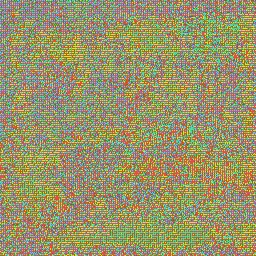Have you done any finetuning?
You've changed the last layer to recognize fewer classes, so the weights that assign an image to a class are indeed random (kinda, it's actually glorot_uniform). You need to train the last layer in order to get results that make sense with your new setup.

I have the following function
get_model()which returns the enet model with weights loaded fromtorch_enet.pkl. The functionsbuild()andtransfer_weights()are fromsrc/test.py.I created a model with 11 classes by calling
get_model(11). I fed the image2015-11-08T13.52.54.655-0000011482.jpgfrom SUNRGBD dataset. The model gave a prediction tensor which I reshaped to (256, 256, 11). To visualize the predictions, I used the following function to save that tensor as an image:The output shows almost random assignment of colors and there's no visible segmentation at all.
The input and the corresponding segmented output can be found below:
